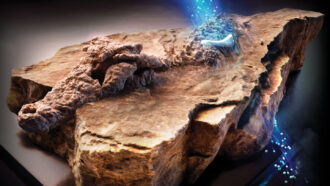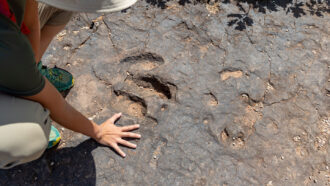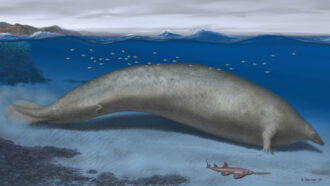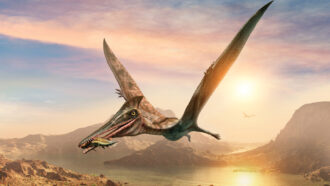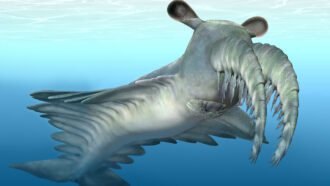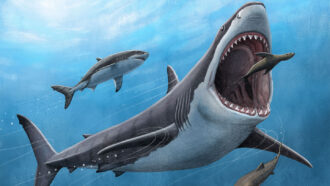Hunting by sucking, long ago
An ancient sea creature with a snakelike neck may have sucked up its prey.
By Emily Sohn
Being eaten alive would be awful, especially if you were gulped down by a weird beast with an extremely long neck.
Recently discovered fossils suggest that a prehistoric sea creature with such a snakelike neck could have sucked in prey. It’s the first example of this kind of feeding strategy ever discovered in an ancient water-dwelling animal.
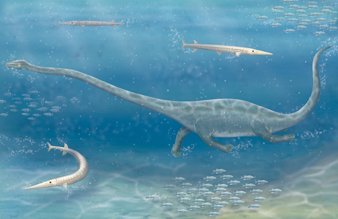 |
|
The fossilized neck bones of this ancient, long-necked sea creature suggest that the animal, at least 3 meters long, captured its prey by creating water suction as it struck.
|
| C. Cain/AAAS, Science |
The creature, called Dinocephalosaurus orientalis, lived in southern China 230 million years ago. It belonged to a group of prehistoric animals known as protorosaurs, and it probably spent most of its time in shallow water near coastlines.
Dinocephalosaurus orientalis means “terrible-headed lizard from the Orient.” Fossils show that its shape was as intimidating as its name. Although the beast’s body was less than 1 meter (3.3 feet) long, its neck stretched a full 1.7 meters (5.6 feet). The neck had 25 long vertebrae and additional bones, which look like ribs, that were attached to the vertebrae.
To explain the weird neck structure, researchers from the University of Chicago and Beijing propose that the lizard’s neck ribs helped it hunt. When the animal thrust its head forward to snap up prey, muscles in its neck contracted. That would make the neck bones spread out and the throat get bigger. This action would create suction that would slurp up water and prey into the creature’s mouth.
Some modern water animals, such as snapping turtles and other reptiles, use suction in their mouths to catch prey. The terrible-headed lizard’s suction would have been much more powerful. And much more terrible, too.


